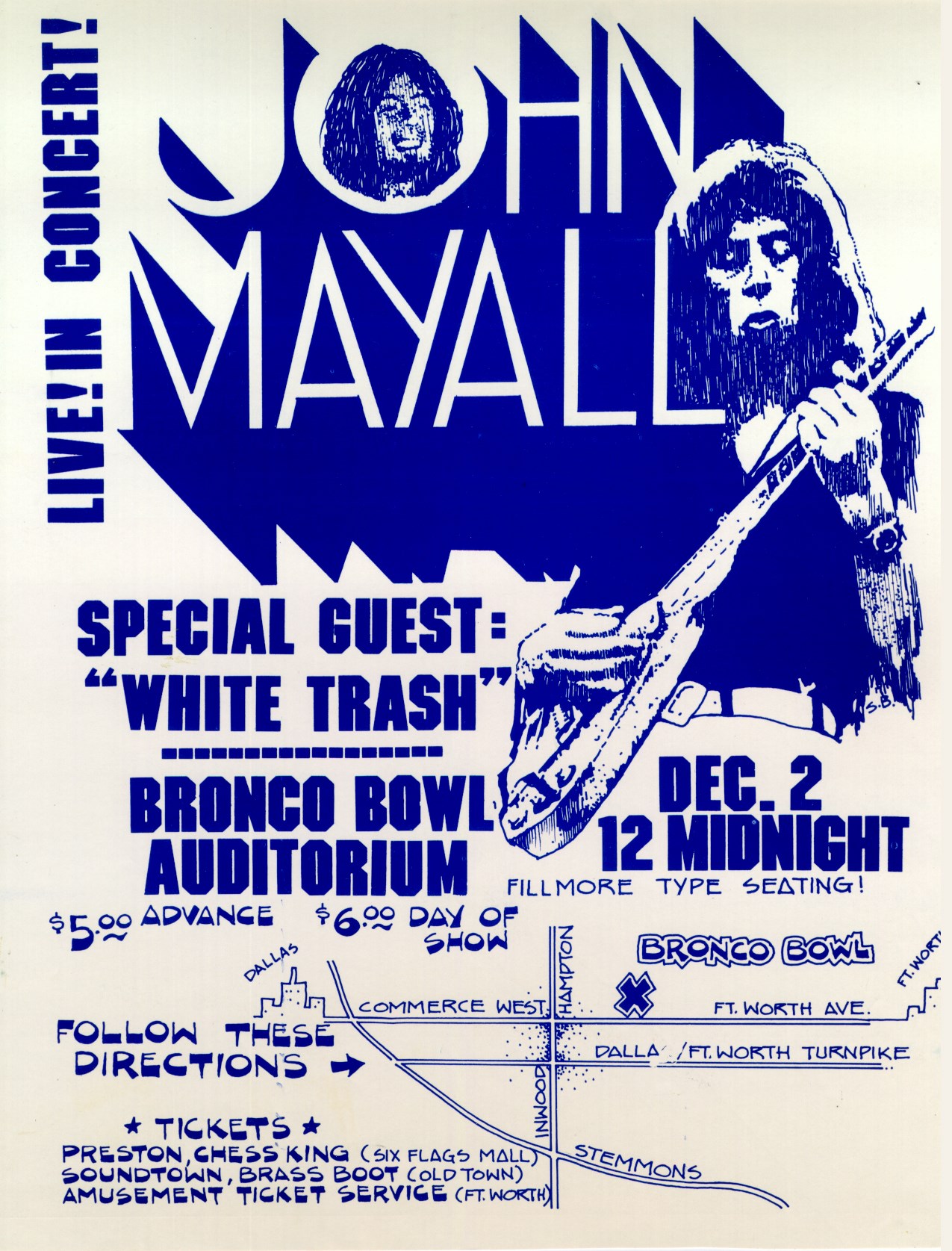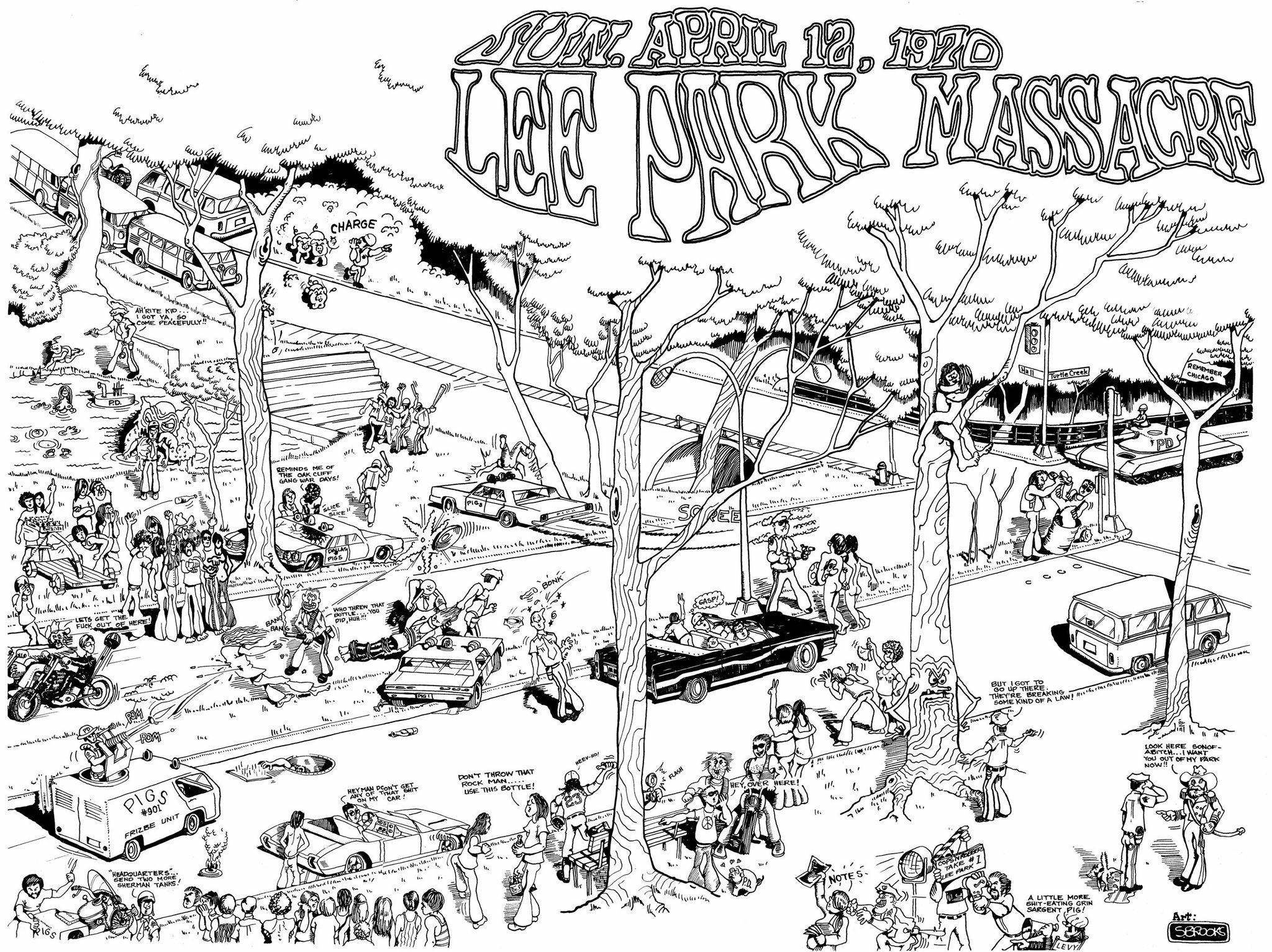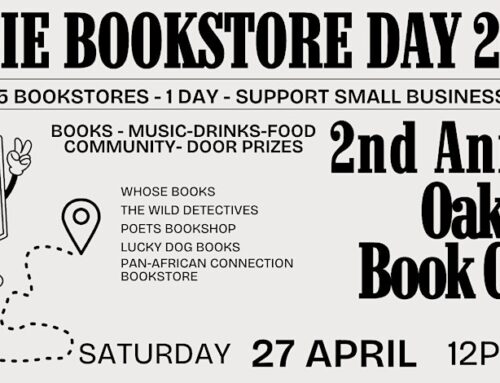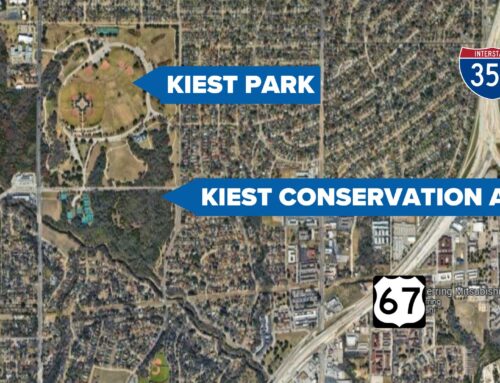The Lee Park “massacre” launched Steve Brooks’ career.
Brooks, who grew up in Oak Cliff and now lives in Kessler Park, was still a student at what is now the University of North Texas in April 1970 when he made a poster to commemorate the clash between “hippies” and police at an afternoon concert that resulted in dozens of arrests.
His poster caught the attention of Jerry Schultz, the owner of the Gas Pipe, who hired him to make art and advertising for his business. Not long after, a Dallas ad firm hired him as an art director.
“I decided I didn’t need to be a student anymore since they made me an art director,” he says. “But that was short-lived because they went out of business a few months later.”
He eventually finished his degree, but not before landing a job as an artist for Concerts West and launching his own company, S. Brooks Graphics, in the summer of 1971.
Brooks produced hundreds of posters and handbills for concerts at a time when every major rock ’n’ roll outfit had to play Dallas because it was a hub of the vinyl record industry for the whole Southwest.
Concerts West, which still exists as part of AEG, closed its Dallas offices a few years later, but by that time, Willie Nelson was requesting Brooks. He’d seen the Lee Park Massacre poster too. Beginning in 1974, Willie Nelson and The Family became Brooks’ biggest client.
One of the first jobs he did for Willie’s company Me and Paul Productions was a minimalist poster for the Fourth of July picnic in Dripping Springs, depicting a pair of sneakers with spurs.
Brooks designed Willie’s logos, personal stationery, tour passes, IDs, ads, posters and basically anything that said Willie Nelson on it besides an album cover for years. He spent several months in Austin for the filming of Honeysuckle Rose, and he made all the props with Buck Bonham’s name on it for that 1980 movie, including the bus, T-shirts and posters.
“Those were some of the best times of my life, working on that movie,” he says.
He traveled to Colorado with The Family band around the same time and painted a teepee for Willie.
“Willie Nelson was awesome,” Brooks says. “He always paid with cash out of his pocket.”
His boss at Me and Paul Productions was Paul English, Willie’s drummer and protector who handled most of the business for some 50 years. English, who lived in Dallas for about 40 years when not on the road, died in February 2020.
“He was a true gentleman,” Brooks says. “I miss him terribly.”
Besides his work for Texas’ quintessential singer, Brooks also made a place for himself in Dallas history with his work in Buddy Magazine and The Iconoclast, two publications founded by Brent Lasalle Stein, aka Stoney Burns.

For the early ’70s alternative newspaper The Iconoclast, Brooks drew, “hippie stuff,” he says. “Black and white cartoons. Sometimes advertisements for clients.”
Buddy started in 1973, and Burns wound up catching hell from the justice system for his journalism, but that is another story. He died in 2011.
Brooks says Buddy, a publication that’s still around, was a great place to work because it was like working for The Rolling Stone of Texas in the ’70s.
“He was a real character,” Brooks says of Burns. “Kind of like a Hunter Thompson, but a lot more tame.”
Musicians and music-industry people came through all the time, “and we threw some really great parties,” he says. “It was good times.”
Brooks is retired now, but he still does some work for the Gas Pipe, which he says has been one of his best clients over the years. He created the logo and signage and all the advertising you’ve ever seen for it.
He has donated some of his work to the UNT libraries, which has a collection under his name. And he supplements his retirement by selling some of his personal stash to serious Willie Nelson collectors.
Brooks graduated from Sunset High School in 1967. He and wife Deborah have an adult son, Bryan. Brooks’ dad, LaVere Brooks, was an architect who designed several homes and commercial buildings in our neighborhood.
He says he owes his career to the Gas Pipe and Willie Nelson, and he’s grateful to them both.
“The two major players in my life as an artist,” he says.






